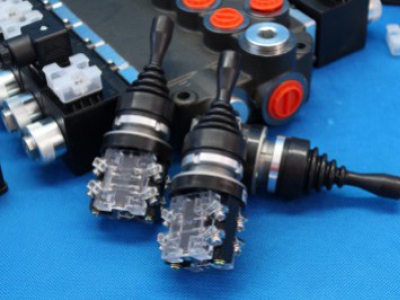Loader joystick valve is very often the basis for the functioning of every, even small, business. It is widely used in hydraulic systems in construction, agriculture and industry and can have various forms. First of all, it can be both a slide valve and a piston valve. The obvious difference between the discussed part and the usual valves is obviously as in the name - valve control by a joystick.
Loader joystick valve is most often adapted to various types of machines such as: agricultural machines, tractors, sprayers, rounds, cyclops, HDS loaders, construction machines, loaders, excavators, sweepers, industrial machines and other devices requiring hydraulic control.
Often, floating sections are also used, i.e. a free runoff, which is used, among others, for snow plows or TUR front loaders. It causes free movement of the piston rod in hydraulic cylinders, protects against damage elements that have direct contact with the ground, such as the blade of the plow.
Controlling the hydraulic valve with the joystick has many advantages. The most important of them are:
-
Unbelievably comfortable, precise and convenient control of the entire valve.
-
A frequently used safety mechanism that allows blocking joystick movements.
-
Loader joystick valve allows you to place all manifolds and cables outside the cabin, so that it remains clean and free of any oil leaks.
A very popular procedure is also to place a spring in our element, which makes it even easier to operate the entire valve. The lever with the spring fitted will return to its starting position practically immediately after release.
On the market you will find a lot of available configurations for our loader joystick valve, so we can be sure that we choose the one that suits you best. We can choose, among other things, the number of sections, the size of the flow, the number of joystick positions, the extent of the temperature range, the number of joysticks or floating sections.
.jpg)


.JPG)